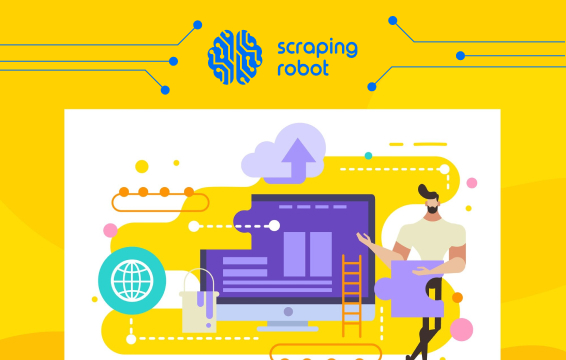Marketing APIs: How to Use Web Scraping for Marketing

Table of Contents
Once you have developed a new product or service, it is time to market it. With the increase of online shopping and advertising, a successful marketing strategy must include analyzing online data. Marketing APIs make it easy to connect with consumers and analyze consumer data. Web scraping, the automatic extraction of data from a web page, is the best method for collecting marketing data. Once collected, the data is analyzed and used to create marketing campaigns that appeal to consumers interests and market insights. Making data-driven marketing decisions helps your organization stay ahead of the competition and create strong relationships with customers.
If you already know the basics of marketing APIs, use the table of contents to discover how the Scraping Robot API makes data analysis more efficient and insightful.
What Are Marketing APIs?
 An API (Application Programming Interface) is the bit of code that makes it possible for two different programs to share information between one another. For example, the Starbucks API connects with your phone software to share data with Starbucks locations near you when you order through the app.
An API (Application Programming Interface) is the bit of code that makes it possible for two different programs to share information between one another. For example, the Starbucks API connects with your phone software to share data with Starbucks locations near you when you order through the app.
Marketing APIs can take many forms including payment API, email API, social media API, and more. All these can be used to collect data and to expand your brand and communicate with consumers.
Web scraping
Web scraping is the automated act of collecting data from an online source. Information is your aim and web scrapers are your formidable tools. Web scrapers save those same individuals a massive amount of time and energy. With the assistance of a data scraper, those in marketing can channel their efforts into money-making campaigns, rather than time-consuming research.
This is precisely how web scraping for marketing affects the daily running of a business. With your time, or an employee’s time freed up, the quicker campaigns will launch, and the faster a company will turn a profit and draw in new customers. We live in a hyper-competitive world. Markets are flooded with the same products and services being sold on various websites and platforms. The more businesses stay on top of savvy marketing tactics, the more they will thrive. Even the most tech-averse companies can appreciate that.
How to Use Web Scraping for Marketing
 With Scraping Robot’s useful and varied modules, you can find a scraping tool right for your project. Here are just a few ways to use data analysis in marketing.
With Scraping Robot’s useful and varied modules, you can find a scraping tool right for your project. Here are just a few ways to use data analysis in marketing.
Consumer sentiment analysis
Scraping social media websites is the perfect way to collect consumers sentiment data. This data is especially useful for marketing because it helps you understand the values and desires of the audience you’re advertising to. This data is both useful when developing new projects and creating marketing campaigns for existing ones.
Social media sites are full of user opinions about products, social issues, and more. This makes it perfect for analyzing consumers values and desires. Scraping trending topics or the profiles of those already following your brand helps you create a network of profiles to market to and insight on their sentiments about the product and brand at large.
For fashion oriented brands or brands with a strong visual presence, scraping social media sites for creative analysis is useful when brainstorming new logos or advertisements. Scraping a given location or hashtag allows you to get a sense for the kinds of imagery that people associate with a given theme or vibe.
Raise brand awareness
An important aspect of marketing is branding, which helps distinguish your product from the competition. If your target audience skews younger then social media branding is essential.
On social media sites, an easy way to gain traction is to create polls or questions in your tweets that prompt discussion. You can style the questions almost like research questions too for even more useful data (ex. A makeup company may ask followers their favorite lipstick shade). Scraping your mentions provides insights into how your brand is currently seen therefore giving you a starting point for moving forward. Based on the current brand analysis, you can move forward with a data-driven marketing plan.
Track market trends
Marketing it more than just appealing to consumer trends. You must also understand your role in your specific market by analyzing the competition. Scraping competitor websites for price data, review data, and product data keeps you informed on what you’re up against. The point of a good marketing campaign is to highlight the unique nature of your product or service. Without understanding the industry standard, it is impossible to decipher how your product rises above the rest. Learning about industry trends and keeping track of changes through scraping competitor data is as important as assessing the success of your own organization.
How Are APIs Used in Marketing?
 In addition to scraping web pages for data, incorporating popular APIs into your organization’s website helps win over customers. Here are a few ways to take the extra step and increase the likelihood of new customers.
In addition to scraping web pages for data, incorporating popular APIs into your organization’s website helps win over customers. Here are a few ways to take the extra step and increase the likelihood of new customers.
Embed social media into website
In addition to sharing data between two different softwares, certain bits of API code can be embedded into your organization’s website for a sleek appearance and easy connectivity between different social media channels. Incorporating other APIs into your site makes it sleek, professional, and accessible for new and returning customers.
Gain efficiency
Many APIs, while unrelated to marketing, are essential for building trust. For example, payment APIs that are often used by other large online retailers are already trusted by consumers. By using a trusted and popular payment API, consumers will feel more at ease ordering online, entrusting you with payment information, and possibly already have payment information saved within the payment API therefore making the process smoother.
While this outsources payment to a different organization, such as Stripe or PayPal, building consumer trust is an essential aspect of marketing. Especially with the possibility of online payment fraud or scams, consumers can know that your company is legitimate and that their information is safe.
Scraping Robot and APIs Modern Marketing
 Once you’ve collected data through scraping marketing APIs, conducting analysis is the next step. Here is how to easily combine multiple data sources for accurate and useful insights.
Once you’ve collected data through scraping marketing APIs, conducting analysis is the next step. Here is how to easily combine multiple data sources for accurate and useful insights.
Scraping Robot API
With Scraping Robot’s API, you can easily collect and input data from multiple websites into the same analysis program. This makes generating industry insights much easier. Our API also comes with the expertise of our team. They can help you further develop unique data solutions, manage and develop proxies, and create secure tools for data extraction.
For marketing purposes, our API makes it easy to combine large data sources for more accurate analysis. With the most data-driven insights, you can move forward confidently into the brainstorming process. If this sounds like a good fit for your organization, then check out our API page to get started.
Conclusion
 Marketing requires a delicate balance of managing consumer desires and utilizing your edge over the competition. Marketing APIs make it easy to analyze consumer sentiment data and raise brand awareness. Using a scraping tool to extract data from web pages yields accurate insights on both your role in the market and your specific location. API code is also easily embedded into your organization’s site for a more seamless online aesthetic. With our Scraping Robot API, it is easier than ever to conduct analysis with multiple data sources easily, quickly, and with our team’s expertise.
Marketing requires a delicate balance of managing consumer desires and utilizing your edge over the competition. Marketing APIs make it easy to analyze consumer sentiment data and raise brand awareness. Using a scraping tool to extract data from web pages yields accurate insights on both your role in the market and your specific location. API code is also easily embedded into your organization’s site for a more seamless online aesthetic. With our Scraping Robot API, it is easier than ever to conduct analysis with multiple data sources easily, quickly, and with our team’s expertise.
The information contained within this article, including information posted by official staff, guest-submitted material, message board postings, or other third-party material is presented solely for the purposes of education and furtherance of the knowledge of the reader. All trademarks used in this publication are hereby acknowledged as the property of their respective owners.
